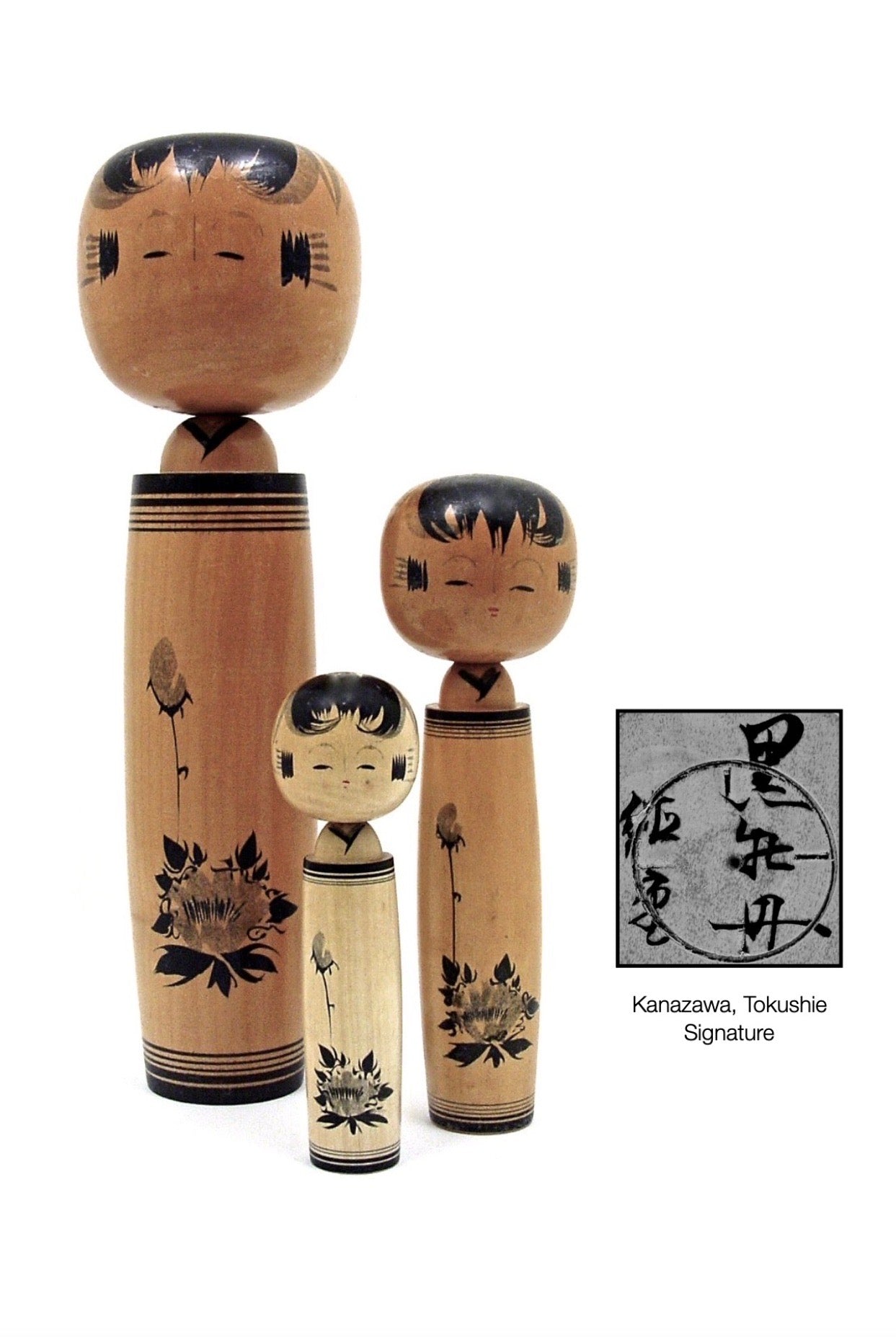
Artisan| Woodworker: Kanazawa, Tokushie
Biographical History:
As collectors, we felt it was most important to represent all Sosaku Kokeshi artists, whether or not each artist has a written account of his/her life. We show the diversity of cultural values and the creative work produced by a multitude of artists. In researching old writings through articles and books that remain, it is evident that the Kokeshi Craftsperson not only created beautiful forms as toys, but also kept alive cultural values, customs, and fashion through the extensive representations of Kokeshi dolls. The beauty is in the doll and not the signatures, for most masters never signed their dolls. Later they named the dolls, but only when Westerners insisted on signatures because they did not know the artists, so the carvers began to sign their works, for the carvers wanted to promote sales to make a living, during the seasons that did not provide an environment to continue their otherwise daily work.
Collector's note – descriptive qualities, standard characteristics & ornamentation styles:
Kanazawa-san is renowned for his dolls featuring paintings of Black Peonys, (Kuro botan), and s referred to as the “Prime Ministers of flowers” illustrating a “rare” motif on Kokeshi dolls, and are a “one-off” creation for a specific individual or occasion. It is said that Kanazawa was inspired by the famous, Peony Garden in Sukagawa, in the Fukushima Prefecture. His dolls are based on traditional facial and hairstyle types, and he incorporates a hand-painted striping technique called Rokuro Moyo. He only utilized black ink in sumi-e’ style graphic technique. The third delicate graphic represents a peony petal and a butterfly. The Kamon symbol was used only for top levels of citizens during the Samurai period in Japan. Kanazawa-san’s dolls are highly prized and seldom seen.
The unique feature beyond the unusual use of the Peony motif is the head and face treatment. The hair is very stylized with the Buddhist hairstyle reminiscent of the type when the hair was draped down the back of the head. The face has double eyelids, pick shaped nose, and a tiny red mouth. All of these dolls were made of dogwood, (mazuki) which was the preferred wood at the time to emphasize the beautiful detailed floral motif finished with a natural colored candle wax, (Rosoku no ro).







